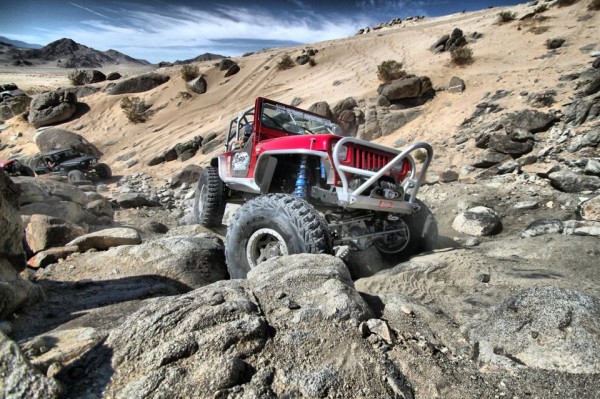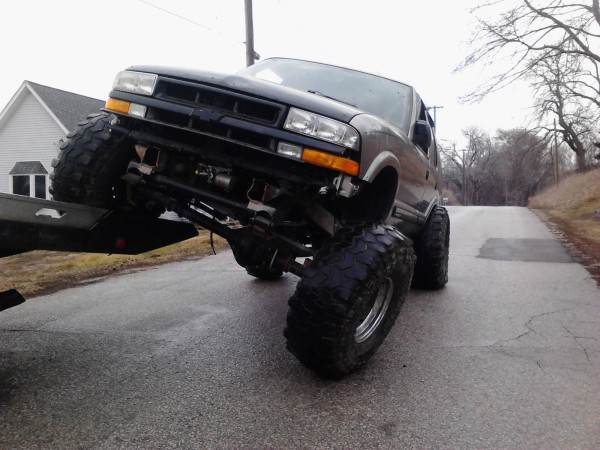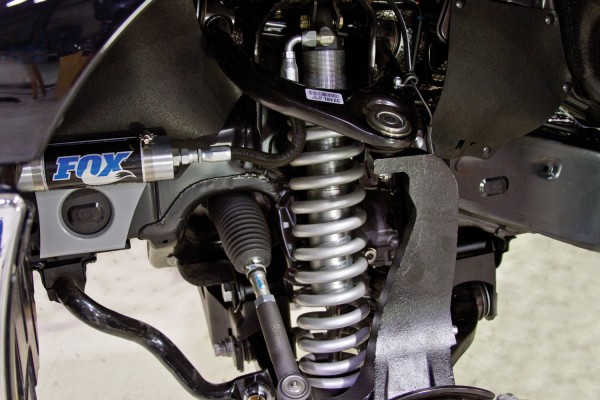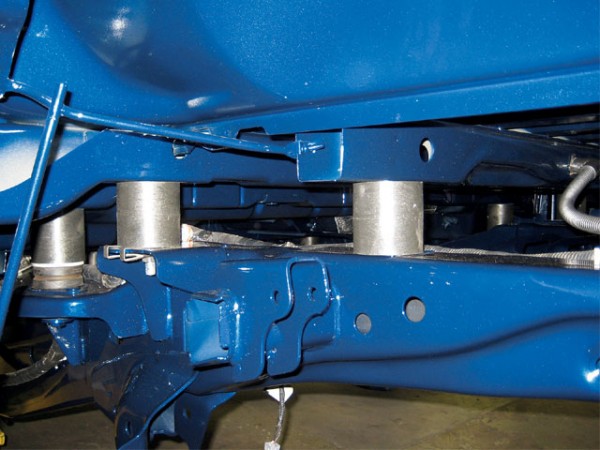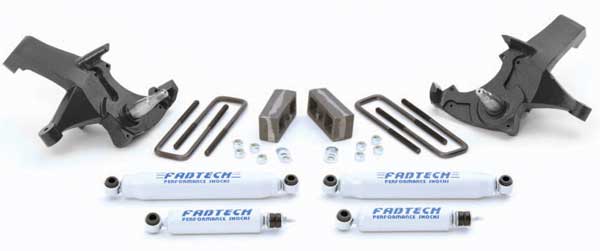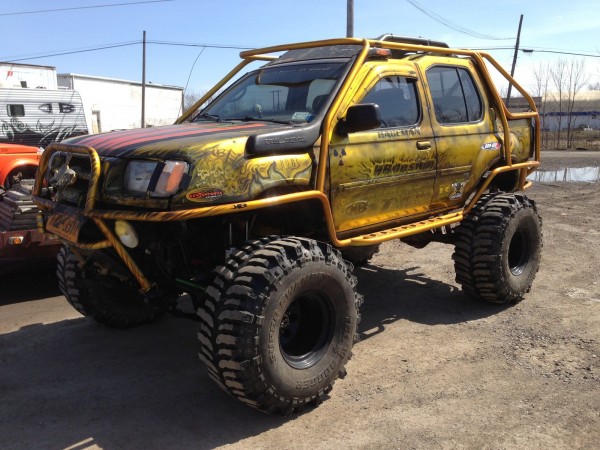What To Know When You’re Buying A Used Vehicle With A Lift Kit
Buying a used vehicle with a lift kit already installed can be a great way to save money. However, there are legitimate concerns about a used lift kit’s installation quality, how the kit will effect future vehicle reliability, and if the kit is a detriment to performance. A used vehicle with a poorly installed lift kit can be worth less than a vehicle with no lift at all…at least to people who can spot the difference between a good lift kit and a bad one.
If you’re looking at a used truck or SUV with a lift kit, here’s what you need to know.
First, Identify the Lift Kit Installer
Professionally installed lift kits almost always come with a placard on the windshield, an information card in the glove box, or printed documentation. Therefore, if you have one or more of these items, you probably have a vehicle with a professionally installed lift kit…and that’s a good thing.
Still, it’s vital to ask the seller if they can provide you with a copy of the lift kit installation work order. With a work order, you can confirm the lift kit was professionally installed. With confirmation of a professional installation, you can breath a little easier, as the odds of a major safety problem are much lower.
If you can’t determine who installed a lift kit – or if you determine the seller installed the kit themselves – it’s not automatically a negative. Just know that you’ll want your used vehicle inspector to go over the lift kit very carefully if you decide to try to by the vehicle.
Next, Determine The Type of Kit
There are five common* types of lift kits found on used vehicles:
1. A spacer lift, which encompasses a huge range of lift kit manufacturers.
2. A bracket lift, most of which must be professionally installed.
3. A body lift, which can range dramatically in terms of installation quality.
4. A spindle lift (2WD only).
5. A combination of two or more of the lifts above.
Identifying the specific type of lift used is important, as it will clue you in to the potential problems the vehicle may have and what to look for in terms of installation quality. Unfortunately, lift kit identification is difficult without experience. Therefore, you’ll probably want to bring any lifted vehicle you’re considering to your local 4WD shop and ask them to take a look.**
* There are quite a few uncommon lift kits in existence, from full travel suspension systems to solid axle swaps to upgraded coil-over kits that include new control arms. Because these kits require relatively major investments, it’s all but certain the seller will describe theses uncommon types of lifts in detail, as they are a selling feature.
** If you’d like to learn a little more about how lift kits work, please check out The Ultimate Guide to Lift Kits. The article explains how lift kits work by type, and includes some helpful illustrations.
You Want To Buy A Vehicle With A Bracket Lift
Bracket lift kits are costly and often require professional installation. However, they’re also generally reliable and safe. Therefore, if you’re looking at a used vehicle with a lift, you want it to have a bracket-type lift kit.
The hardest part of buying a vehicle with a bracket lift can be figuring out when the lift was installed and who did the work. Sometimes these kits are installed by dealerships, and if that’s the case with the vehicle you’re looking at, it may be hard to figure out who specifically installed the kit.
Still, provided you can obtain proof of professional installation, a used vehicle with a bracket lift is generally a safe bet.
Body Lifts Are Hit or Miss
Body lift kits are a collection of spacers placed between a vehicle’s body and it’s frame. Installed correctly, a body lift is a relatively cheap way to fit some over-sized wheels and tires on any vehicle. Installed incorrectly, a body lift can be a source of numerous problems and a serious safety risk. Tell-tale signs of a body lift include:
• An odd gap between the vehicle’s bumper and the body work.
• Visible spacers between the frame and the body.
• Brake line extensions and/or new brake lines.
While it would be incorrect to dismiss any vehicle with a body lift (sometimes a body lift kit is the only option available), it’s important to have any vehicle with a body lift inspected carefully. An incorrectly installed body lift can be quite dangerous, and because any confident DIY’er can tackle a body lift on their own, incorrect installs are surprisingly common.
Spacer Lift Kits Must Be Inspected
Spacer lifts are pretty simple in concept: a steel or aluminum spacer is placed between the vehicle’s frame and springs, typically raising the height of a vehicle by 1.5 to 3 inches. While spacer lifts can negatively effect ride quality and off-road performance, most vehicle owners find spacer lifts to be perfectly adequate for everyday use.
However, because spacer lifts are both inexpensive and relatively easy to install, the likelihood of buying a kit installed by an amateur are high. While amateur installs aren’t automatically bad, odds of a problem are higher. Therefore:
1. You’ll want a vehicle inspector to look the suspension over very carefully.
2. If you’re buying a 4WD, ask the inspector to determine if the vehicle has a differential drop kit.
3. If the vehicle has more than 2” of lift and does not have a differential drop kit, long-term problems with the vehicle’s CV joints are high.
Spindle Lifts – Two Wheel Drive Only
A spindle lift increases vehicle height by increasing the distance between the wheel hub and the rest of the vehicle chassis. Available only on 2WD vehicles, spindle lifts can add 3- 4 inches of height. If they’re combined with another type of kit (typically a spacer lift), a spindle lift kit can be an inexpensive alternative to a bracket lift for 2WD vehicles.
While spindle lifts themselves are typically safe and worry free, the problem is that these kits are often combined with other kits. As you’ll read below, lift kit combinations require extra attention.
Beware of Lift Kit Combinations and Lifts Over 6 inches
Combining two different types of lift kits – like a body lift and a spacer lift – isn’t inherently bad. However, it is often representative of a lift kit installed by an amateur on a budget. Therefore, a vehicle with a combination of lift kits must be carefully inspected.
Also, if you’re looking at a vehicle with more than 6” of lift you want to be particularly mindful of problems. If, for example, someone installed two spacer kits (one on top of another) to try and get a few extra inches of height, you’re looking at a serious safety problem. If someone combined a three different types of kits to get a whopping 12” of additional height, you need to be very mindful of installation quality. Etc.
To sum it all up: Bracket lifts with documentation of professional install are good. Everything else requires inspection.
Some Quick Lift Kit Inspection Tips
While you should always hire a professional inspector to look over any used vehicle you’re considering, there are some quick and simple inspections you can do yourself to spot problems with a lifted vehicle:
- Is the vehicle even from left to right? If one side of a lifted vehicle (e.g. the driver’s side) looks noticeably higher than the other to the naked eye, there’s a problem.
- Inspect the tire tread and make sure it’s wearing evenly. Uneven wear can be a sign that a vehicle needs alignment, or it can be a sign of a bigger issue with the lift kit.
- Make sure the tires don’t rub when the steering wheel is fully turned. While wheel rub is sometimes unavoidable on a lifted vehicle, it can also be a sign of an installation shortcut.
- Check to see if the speedometer has been corrected. An easy way to see if the lifted truck you’re driving has a corrected speedometer is to cruise with traffic on a road you’re familiar with. If it seems like you’re going faster than the speedometer indicates, it probably needs correcting. An uncorrected speedometer is a sign that the installer took a shortcut.
These quick checks – combined with the other notes above – should help you determine if a lifted vehicle is worth pursuing or not. If the vehicle you’re looking at has a couple of potential problems, and the seller can’t provide any sort of installation documentation (not even a copy of the instructions from the lift kit they installed), it might be a good idea to move on.
Summing It All Up
Generally speaking, the rules of buying a lifted used vehicle are:
1. Professionally installed lifts are best, especially if you can obtain proof of install (and verify proof with the installer).
2. Amateur-installed lift kits aren’t necessarily bad, but they must be inspected very closely.
3. Bracket lift kits are generally reliable and safe (assuming they’re professionally installed).
4. Any other type of lift kit should be inspected very carefully regardless of installer.
Finally, when in doubt, remember that you can always purchase a vehicle without a lift kit. While you will save money in the short term buying a used vehicle with a lift kit, the long-term costs of buying a vehicle with a poorly installed lift kit are often higher than the cost of installing a kit yourself.
Good luck!
# # #
Jason Lancaster is the author of The Ultimate Guide to Lift Kits, a popular article that explains how lift kits work on TacomaHQ.com. Jason is also the founder of AccurateAutoAdvice.com, a website dedicated to giving consumers accurate automotive advice and information.
See Car & Truck Lift Kits & Parts for sale on eBay.

